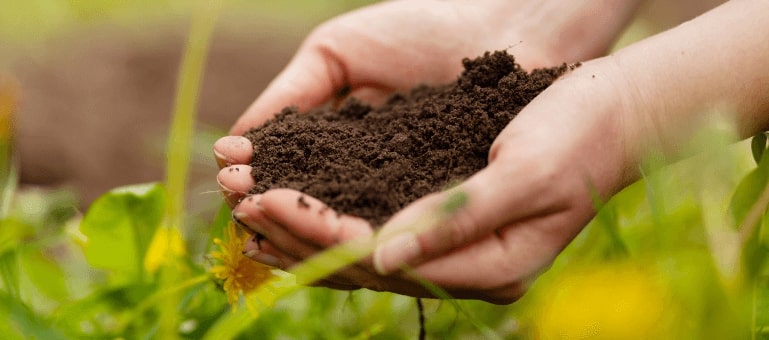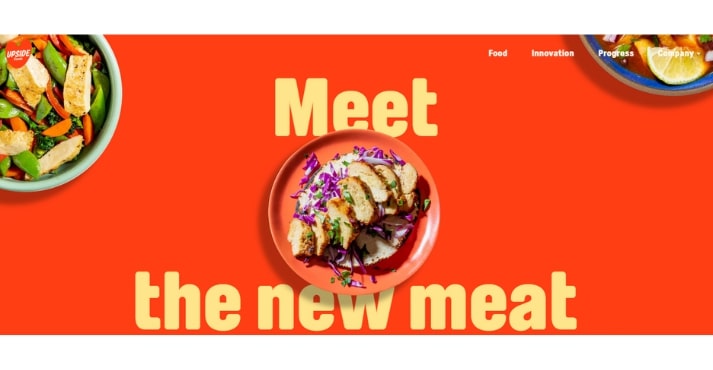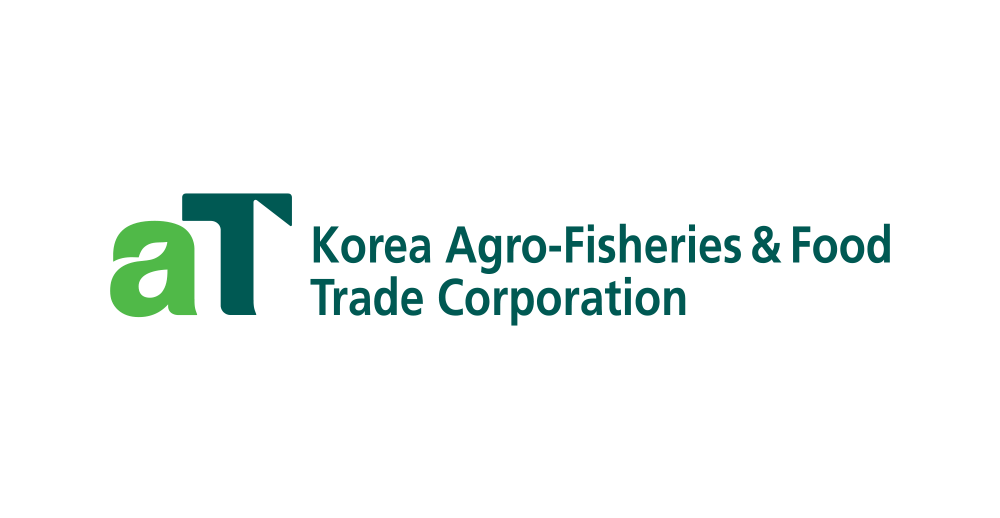In the ever-evolving landscape of the food industry, a new frontier emerges Foodtech. This cutting-edge concept harnesses technological advancements to revolutionize food production and consumption.
Foodtech, at its core, represents the marriage of food and technology – an exquisite fusion that paves the way for enhanced efficiency, sustainability, and culinary marvels. From farm to fork, the advancements in Foodtech are redefining every step of the food journey, promising to reshape the way we nourish ourselves and the world.
What is Foodtech?
Defining Foodtech
Foodtech, short for Food Technology, represents a dynamic field that harnesses the power of technology and innovation to revolutionize the way we produce, distribute, and consume food.
It is at the forefront of the culinary revolution, blending cutting-edge advancements with age-old traditions to create a more sustainable, efficient, and delightful food experience.
In essence, Foodtech encompasses a vast array of technological solutions that span the entire food industry.
Technology seamlessly interweaves with every aspect of the food journey from farm to table, offering ingenious solutions to challenges and inspiring novel ways to savor flavors.
Applications of Foodtech – Enhancing the Food Industry through Technology
Foodtech’s versatile applications extend across the entire food industry, transforming the way we produce, distribute, and enjoy our meals. Let’s explore its multifaceted impact, from optimizing supply chain management to enhancing food safety and introducing delightful culinary innovations.
- Supply Chain Management: Food tech streamlines the supply chain, offering real-time data and analytics that enable efficient inventory management, logistics, and distribution. From farm to consumer, this technological prowess ensures fresher produce, reduced food wastage, and improved accessibility.
- Food Safety: With Foodtech’s emphasis on traceability and quality control, food safety takes center stage. Innovative sensors, blockchain technology, and AI-powered systems provide transparent and robust food safety measures, safeguarding consumers and fostering trust in the foodtech industry.
- Culinary Innovations: Foodtech introduces new culinary experiences, blurring the lines between gastronomy and technology. From 3D-printed foods to AI-driven recipe development, this dynamic field ignites our taste buds and expands the possibilities of flavor, texture, and presentation.
Types of Food Technologies

Food technologies comprise an ecosystem of all the food and beverage entrepreneurs and startups innovating on the products, distribution, marketing, or business model.
According to Statista, the size of the food technology market worldwide is expected to exceed US$ 360 billion by 2028.
With food tech growth, the product and ingredient portfolios are changing, and where and how foods are produced, ample food and agriculture companies can shift the food system toward healthier and sustainable options.
1. Food Processing
Food processing is the techniques and methods used to transform raw agricultural products into consumable food items. This process involves various steps such as cleaning, sorting, cooking, preserving, and packaging to make food safe, palatable, and convenient for consumption.
Here are commonly used food processing techniques and methods:
- Dehydration: Removes moisture from food to inhibit microbial growth and extend shelf life.
- Fermentation: Utilizes microorganisms to break down sugars and produce acids or alcohol, enhancing flavor and preserving food.
- Canning: Seals food in airtight containers and heat to destroy bacteria, ensuring long-term preservation.
- Freezing: Lowers temperature to halt microbial activity, preserving food quality and freshness.
- Pasteurization: Heat treatment to kill pathogens while preserving the flavor and nutritional value of liquids like milk and juice.
- Smoking: Exposes food to smoke from burning wood chips to impart flavor and preserve through antimicrobial properties.
- Pickling: Immerses food in vinegar or brine solution to create an acidic environment that prevents spoilage.
- Salting: Applies salt to draw out moisture, inhibit bacterial growth, and enhance flavor in meats and fish.
- Grinding/Milling: Break down food into smaller particles to improve texture and create uniformity in products like flour.
- Extrusion: Forces food through a die to create specific shapes or textures commonly used in snack production.
Moreover, food processing enhances taste, texture, and shelf life, essential consumer acceptance and marketability factors. It also adds nutritional value to the raw ingredients while extending their shelf life.
2. Food Packaging
Food packaging refers to enclosing food products in protective materials such as boxes, cans, bottles, or bags to maintain freshness, prevent contamination, extend shelf life, and provide essential information to consumers regarding ingredients, nutritional content, and usage instructions.
Here are critical innovations in packaging materials, design, and techniques to protect food products and ensure their safety and quality:
- Sustainable materials: Biodegradable plastics, compostable packaging, and plant-based alternatives.
- Active packaging: Incorporating antimicrobial agents or oxygen absorbers to extend shelf life.
- Innovative packaging: Sensors to monitor the product’s freshness, temperature, and integrity.
- Modified Atmosphere Packaging (MAP): Adjusting gas composition to slow spoilage.
- Edible packaging: Films made from edible materials to reduce waste.
- Nanotechnology: Enhancing barrier properties and antimicrobial effects.
- Interactive packaging: QR codes, NFC tags, or augmented reality for consumer engagement.
- Recyclable and reusable packaging: Encouraging circular economy principles.
- Shelf-life extension technologies: Coatings or films to prevent moisture loss and microbial growth.
Packaging enhances consumer convenience through easy-to-open designs, portion control options, and informative labeling, ensuring food remains fresh, safe, and accessible for longer, meeting consumer needs.
3. Food Preservation
Food preservation refers to extending the shelf life and maintaining the quality of food products by inhibiting microbial growth, enzymatic activity, and oxidation.
Four methods and technologies are used to extend the shelf life of food products:
- Refrigeration: Lowers temperature to slow microbial growth and enzymatic activity, preserving food freshness and quality.
- Canning: Seals food in airtight containers and applies heat to destroy microorganisms, ensuring long-term preservation without refrigeration.
- Drying: Removes moisture from food to inhibit microbial growth, extending shelf life while maintaining nutritional content.
- Irradiation: Exposes food to ionizing radiation to kill bacteria and pests, extending shelf life without affecting taste or nutritional value.
4. Food Safety and Quality Assurance
Food Safety and quality assurance involves ensuring that food products meet regulatory standards and consumer expectations regarding safety, nutritional value, and sensory attributes.
Here are some of the most common systems and technologies used to ensure the safety, quality, and integrity of food products:
- Hazard Analysis and Critical Control Points (HACCP): A systematic preventive approach to food safety that identifies, evaluates, and controls hazards at critical points in the production process, ensuring safe and consistent food products.
- Traceability Systems: Utilizes technology like barcodes or RFID to track the movement of food products from farm to fork, enabling rapid recall and ensuring transparency and accountability.
- Food Testing and Inspection Technologies: Employ methods such as chromatography, PCR, and spectroscopy to detect contaminants, pathogens, and pollutants, ensuring compliance with safety and quality standards.
- Blockchain Technology: Utilizes decentralized, immutable ledgers to record and verify transactions across the supply chain, enhancing transparency, traceability, and trustworthiness while mitigating fraud risks and counterfeit products.
Quality assurance measures ensure that food products consistently meet regulatory standards and consumer expectations by implementing rigorous testing, inspection, and control procedures throughout the production process.
5. Food Supply Chain
The food supply chain includes all stages of bringing food products from production to consumption, including farming, processing, distribution, and retail. Optimizing this chain requires efficient inventory management, logistics, and traceability systems.
Technologies such as RFID, GPS tracking, and cloud-based software facilitate real-time monitoring, inventory control, and traceability, ensuring timely delivery, minimizing waste, and maintaining product quality and safety throughout the supply chain.
A well-functioning supply chain ensures food availability and accessibility by efficiently connecting producers with consumers. It facilitates the timely delivery of food products, minimizes waste, and ensures that diverse and nutritious food options are accessible to all, promoting food security.
6. Food Waste Reduction
Food waste reduction refers to the efforts and strategies to minimize the amount of food discarded throughout the supply chain and at the consumer level, conserving resources and reducing environmental impact.
- Surplus food redistribution: This platform utilizes technology to connect food businesses with surplus food to charities or individuals in need, diverting edible food from landfills and addressing hunger.
- Composting solutions help convert food waste into nutrient-rich compost, reducing landfill burden and promoting soil health and sustainability.
Reducing food waste has numerous environmental and economic benefits, such as conserving natural resources by reducing the energy, water, and land usage associated with food production.
Also, it mitigates greenhouse gas emissions from decomposing food in landfills and generates cost savings for businesses and households while addressing food insecurity and promoting sustainability.
7. Nutrition and Health
Nutrition and health refer to the relationship between dietary intake and well-being, including the consumption of nutrients and their impact on physical and mental health.
The following technologies are focused on promoting nutrition, health, and wellness:
- Personalized dietary recommendation technologies utilize data analytics and AI to tailor dietary plans to individual needs, considering health goals, preferences, and dietary restrictions.
- Nutritional analysis tools provide insights into the nutritional content of foods, aiding in informed dietary choices for improved health and wellness.
There is an upsurge in consumers driving dietary trends by focusing on health and nutrition. According to McKinsey research, at least 70% of the respondents across the markets surveyed want to be healthier. Food is essential to achieving that goal, and about 50% of consumers across different age groups say healthy eating is their top priority.
Trends in Foodtech
Smart Farming and Agriculture – Revolutionizing Agriculture with Technology

Foodtech spearheads a revolution in modern farming and agriculture practices, ushering in an era of smart farming with the implementation of agricultural technology. Through cutting-edge technologies such as IoT and data analytics, agriculture embraces a data-driven transformation that optimizes crop yield, sustainability, and resource management.
- Precision Agriculture: Smart farming leverages precision farming techniques, where sensors and drones monitor crops in real time. This granular data empowers farmers to make informed decisions, from precise irrigation to targeted pest management, reducing resource wastage and environmental impact.
- Sustainable Farming: Food tech cultivates sustainable practices by optimizing resource allocation and minimizing the carbon footprint. With the introduction of genetically altered foods, farmers are able to enhance the productivity of cultivated crops. Similarly, smart irrigation systems, soil sensors, and weather predictions enable farmers to work in harmony with nature, ensuring long-term viability and ecological balance.
Online Food Delivery and Ordering – Convenience and Efficiency in Food Technology

Foodtech’s transformative impact extends to online food delivery and ordering, ushering in a new era of convenience and efficiency.
With the rise of innovative online ordering platforms and introduction of the cloud kitchen concept, the food delivery ecosystem embraces a seamless and delightful F&B customer experience.
- Food Delivery Apps: Foodtech introduces a plethora of food delivery apps, providing a diverse array of culinary delights at the touch of a button. From gourmet meals to comfort food, these apps offer a gateway to an abundance of dining options, catering to every palate.
- Contactless Delivery: Foodtech prioritizes safety and convenience with contactless delivery options. Customers can enjoy their favorite meals with peace of mind as delivery optimization technologies ensure timely and secure doorstep delivery.
Personalized Nutrition and Health – Empowering Health through Foodtech
Food technology embraces a future of personalized nutrition and health solutions, placing the power of well-being in the hands of individuals. AI-driven tools and wearable devices join forces, equipping people with the knowledge to make informed dietary choices tailored to their unique needs.
- AI-Driven Tools: Foodtech’s AI-driven tools analyze vast datasets to provide personalized dietary recommendations. From personalized meal plans to real-time nutritional insights, these smart solutions empower individuals to optimize their health and vitality.
- Wearable Devices: Foodtech and health tech merge seamlessly through wearable devices. These intelligent companions monitor vital health metrics, offering actionable feedback that fosters a deeper understanding of one’s body and nutrition requirements.
Trade Shows: Showcasing Foodtech Innovation
Foodtech isn’t just limited to labs and kitchens—it’s on display at food trade shows too! These special events play a big role in revealing the latest ways technology is changing the food world. Imagine a big expo where companies and smart folks come together to show off their cool ideas and gadgets for making food better.
Trade shows for Food technology are like super gatherings where experts, thinkers, money folks, and food lovers meet up. They’re like a party for new ideas, like growing food in cool ways and ensuring it’s safe to eat.
At these events, you can see how high-tech stuff helps with getting food from farms to your plate. There are smart tools that help farms keep track of their stuff, like when to water the plants and how to move food around so it doesn’t get old. It’s like a game of making sure the food stays fresh and yummy all the way to you.
People at trade shows also talk a lot about keeping food safe. They show off smart machines that monitor the food and ensure it’s okay to eat. It’s like having a food superhero watching out for you so that you can enjoy your meal without any worries.
And guess what? There’s a space for amazing food ideas too! You can see how machines make food look fancy or taste totally different. They might even have food that’s made using 3D printers or robots that know how to cook.
But that’s not all! Trade shows also have a spot for ideas about being kind to our planet. They talk about things like using less stuff for packing food or making food from plants instead of animals. It’s all about making food and the Earth happy together.
Latest Food Tech Companies in 2024
1. Beyond Meat

Beyond Meat, Inc. is a Los Angeles–based producer of plant-based meat substitutes founded in 2009 by Ethan Brow. Beyond Meat has innovated revolutionary plant-based Beyond Steak, expanding its portfolio of delicious, nutritious, and sustainable plant-based meat products.
Moreover, according to PR Newswire, Beyond Meat’s Delicious plant-based products will be exclusively featured at the Go Beyond® Grill, a brand-new, first-of-its-kind dedicated concession stand on the Madison Square Garden concourse.
2. Perfect Day

Perfect Day is revolutionizing dairy production with its animal-free approach. Precision fermentation produces dairy proteins identical to those found in cow’s milk without the need for animals. This innovative technology can disrupt the dairy industry by offering sustainable, ethical, and cruelty-free alternatives to traditional dairy products.
One key innovation by Perfect Day includes precision fermentation to create a highly functional whey protein that contains no lactose, cholesterol, hormones, or pesticides.
3. Lunchbox (New York-based startup)

Lunchbox is a prominent New York-based food tech startup known for its innovative approach to the restaurant industry. Offering digital ordering and marketing solutions, Lunchbox enables restaurants to streamline operations, enhance customer engagement, and drive sales. With its focus on leveraging technology to transform the dining experience, Lunchbox has quickly gained traction as a leader in the evolving food tech landscape.
Lunchbox announced its partnership with Toast, a cloud-based, all-in-one digital technology platform purpose-built for the entire restaurant community. Moreover, the company launched an enterprise online ordering system, a management suite with enhanced backend features that streamline the guest catering experience from end to end.
4. UPSIDE Foods

UPSIDE Foods, formerly known as Memphis Meats, is a company at the forefront of cell-cultured meat production. Utilizing cutting-edge biotechnology, UPSIDE Foods produces real meat directly from animal cells, bypassing the need for traditional animal agriculture. Their innovative approach addresses sustainability concerns, animal welfare issues, and the growing demand for protein.
According to the PR Newswire, UPSIDE Foods is set to produce millions of pounds of cultivated meat products, starting with cultivated chicken, by establishing a plant that will expand its commercial offerings, increase scalability, and reduce production costs.
5. Planet A Foods

Planet A Foods is dedicated to sustainable food solutions, striving to combat environmental challenges in the food industry. With a mission to create delicious, planet-friendly foods, they offer plant-based alternatives that reduce carbon footprints and promote biodiversity. Their initiatives include sourcing ingredients responsibly, minimizing waste, and advocating for sustainable farming practices.
Planet A Foods is set to revolutionize the world’s first cocoa-free chocolate, ChoViva. Major companies are already among the customers of Planet A Foods, which is planning further partnerships.
8 Challenges of Food Sustainability

Food sustainability faces challenges that threaten its long-term viability. From climate change impacts to resource depletion, food waste, and inequitable distribution, these challenges demand urgent attention and solutions to ensure food security and environmental preservation for present and future generations.
1. Climate Change Impacts
Climate change is defined as long-term shifts in temperature and weather patterns around the globe. The global temperature increase is estimated to reach a median of 2.7 degrees Celsius in 2100.
Moreover, the ocean’s warming rate has enormously increased over the past two decades across all ocean depths.
Here are some fundamental challenges climate change poses on food sustainability:
- Extreme weather events: Intensified droughts, floods, and storms can damage crops, disrupt supply chains, and lead to food shortages.
- Changing growing conditions: Altered temperatures and precipitation patterns affect crop growth, yield, and suitability for specific regions.
- Disruptions to agricultural systems: Pests, diseases, and soil degradation challenge farming practices, threatening food production and security.
These challenges endangered food production by reducing crop yields, increasing production costs, and disrupting supply chains. Global food security is compromised as vulnerable populations face shortages and price spikes.
Urgent action is needed to build resilience in agricultural systems, ensure equitable access to food, and mitigate the impacts of climate change.
2. Loss of Biodiversity
According to the World Economic Forum, US$ 44 trillion in economic value generation—representing more than half of global GDP—depends on natural capital, such as soil, air, and water.
Biodiversity supports essential ecosystem functions such as pollination, pest control, and soil fertility. Biodiversity also underpins the world’s food system.
Here are some key challenges of biodiversity loss:
- Habitat destruction: Clearing forests and other natural habitats for agriculture, urbanization, or infrastructure destroys ecosystems, leading to biodiversity loss.
- Monoculture farming: Growing a single crop over large areas reduces biodiversity, depletes soil nutrients, and increases susceptibility to pests and diseases.
- Decline of pollinators: Factors like habitat loss, pesticide use, and climate change threaten pollinator populations, playing a leading role in pollinating crops and maintaining plant diversity.
Protecting biodiversity ensures long-term food security by maintaining healthy ecosystems that adapt to evolving conditions for sustainable agriculture and human well-being.
3. Soil Degradation
Soil degradation poses challenges to food sustainability, such as erosion, nutrient depletion, and contamination. Erosion removes fertile topsoil, reducing crop productivity.
Nutrient depletion diminishes soil fertility, increasing the cost of fertilizers. Contamination with pollutants and chemicals adds risks to food safety and ecosystem health, threatening agricultural viability and food security.
It compromises ecosystem health, disrupting ecological processes and biodiversity. Long-term soil fertility declines, resulting in increased inputs and management interventions, threatening future food production capabilities.
4. Water Scarcity
According to UNESCO, 2 billion people (26% of the global population) do not have safe drinking water, and 3.6 billion (46%) lack access to safely managed sanitation.
The challenges of water scarcity in agriculture include the following:
- Competition for limited water resources intensifies as urbanization and industrialization increase, affecting agricultural production.
- Depletion of aquifers due to over-extraction exacerbates scarcity, threatening long-term water availability.
- Inefficient water use practices like flood irrigation further strain resources.
Water scarcity in agriculture has different implications, such as decreased crop yields and quality, impacting agricultural productivity and profitability. This, in turn, threatens food security, as lower yields may result in insufficient food production to meet the demands of a growing population.
5. Food Loss and Waste
Food loss and waste at each stage of the food supply chain can be categorized as unused, discarded, spoiled, expired, or uneaten. To define it simply, food loss occurs before the food reaches the consumer, while food waste is when food is sold to the consumers.
According to the United Nations Environment Programme, one-third of all global food is lost or wasted. These methods maintain food quality and safety by inhibiting microbial growth, enzymatic activity, and oxidation, allowing for extended storage and distribution periods.
Impact of food loss and waste on the following:
- Environmentally, wasted food contributes to greenhouse gas emissions and resource depletion.
- Economically, it represents lost revenue and wasted resources invested in production.
- Socially, it exacerbates food insecurity and inequity.
Mitigation strategies include improved storage and transportation infrastructure, standardized date labeling, consumer education, and diversion of surplus food to donation or composting. Such efforts reduce the environmental footprint and hunger to promote sustainable resource utilization.
6. Resource-Intensive Food Production
Resource-intensive food production systems like livestock farming and monoculture crops face increased pressure on land, water, and energy resources.
Livestock farming contributes to deforestation, water pollution, and greenhouse gas emissions. Monoculture crops deplete soil nutrients and increase susceptibility to pests and diseases.
Here are some key challenges associated with resource-intensive food production systems:
- Greenhouse Gas Emissions: Livestock farming, particularly cattle farming, emits methane and results in greenhouse gases.
- Land Degradation: Intensive agricultural practices like monoculture farming deplete soil nutrients, leading to erosion and reduced fertility.
- Water Pollution: Runoff from agricultural fields containing pesticides, fertilizers, and animal waste pollutes waterways, harming aquatic ecosystems and human health.
7. Supply Chain Resilience
Pandemics, natural disasters, and trade conflicts can affect food supply chains at local to global scales. These challenges can disrupt transportation, labor availability, and supply chain logistics, leading to shortages and price volatility.
Diversification of suppliers and distribution channels can reduce reliance on a single source or route. Also, investment in technology and infrastructure, such as warehouses, transportation networks, and cold storage facilities, further enhances the resilience of the food supply chain to disruptions.
Moreover, stockpiling of essential food items provides a buffer against sudden spikes in demand or disruptions in production or distribution, helping to stabilize prices and maintain food access for all populations.
8. Sustainable Consumption Patterns
To promote and address the food sustainability challenge, food and beverage manufacturers must create awareness among consumers regarding reducing meat consumption, opting for locally sourced and seasonal foods, and minimizing food waste.
While these actions offer benefits for public health, environmental sustainability, and social equity, challenges persist. Reducing meat consumption can improve health outcomes and reduce greenhouse gas emissions associated with livestock farming.
Choosing locally sourced and seasonal foods supports local economies and reduces carbon emissions from transportation. Minimizing food waste conserves resources and reduces landfill waste, benefiting the environment.
However, cultural preferences, affordability, and accessibility barriers must be addressed to ensure food sustainability. To overcome these challenges, promoting sustainable consumption patterns requires collaboration among governments, businesses, and communities.
Conclusion
Foodtech stands at the forefront of revolutionizing the food industry, leaving an indelible mark on how we produce, distribute, and enjoy our meals. This technological transformation drives remarkable efficiencies, sustainability, and personalized experiences, ensuring that every aspect of the food journey embraces the power of innovation.
From optimizing supply chain management to embracing sustainable food solutions, Foodtech’s influence spans the entire culinary landscape. It empowers restaurants and food businesses to meet diverse consumer demands while reducing waste and minimizing the environmental impact.
Moreover, integrating AI-driven tools and wearable devices empowers individuals to make conscious dietary choices tailored to their unique needs. This customer-centric approach redefines how we nourish ourselves, placing health and well-being at the heart of every bite.





























